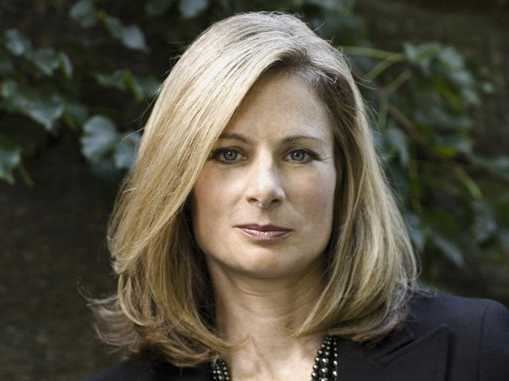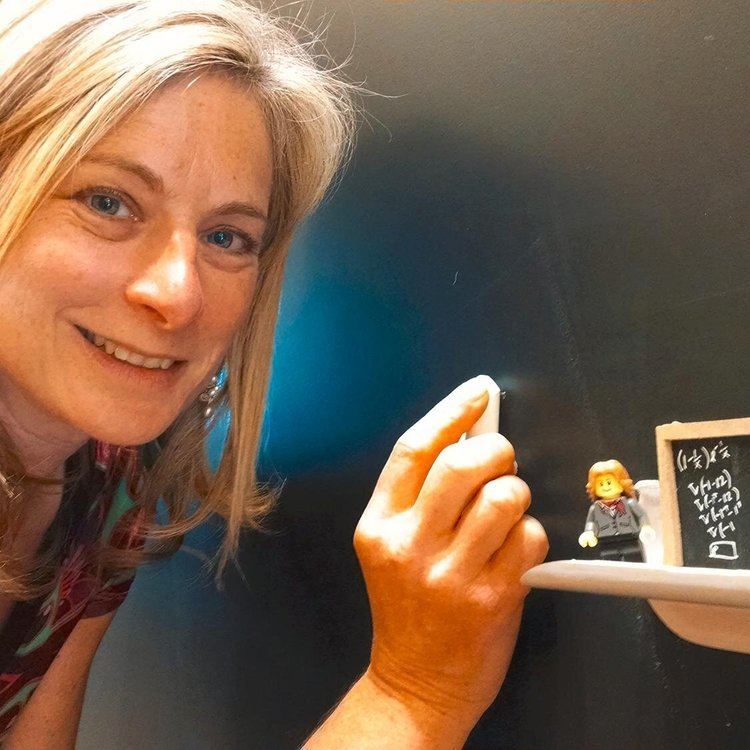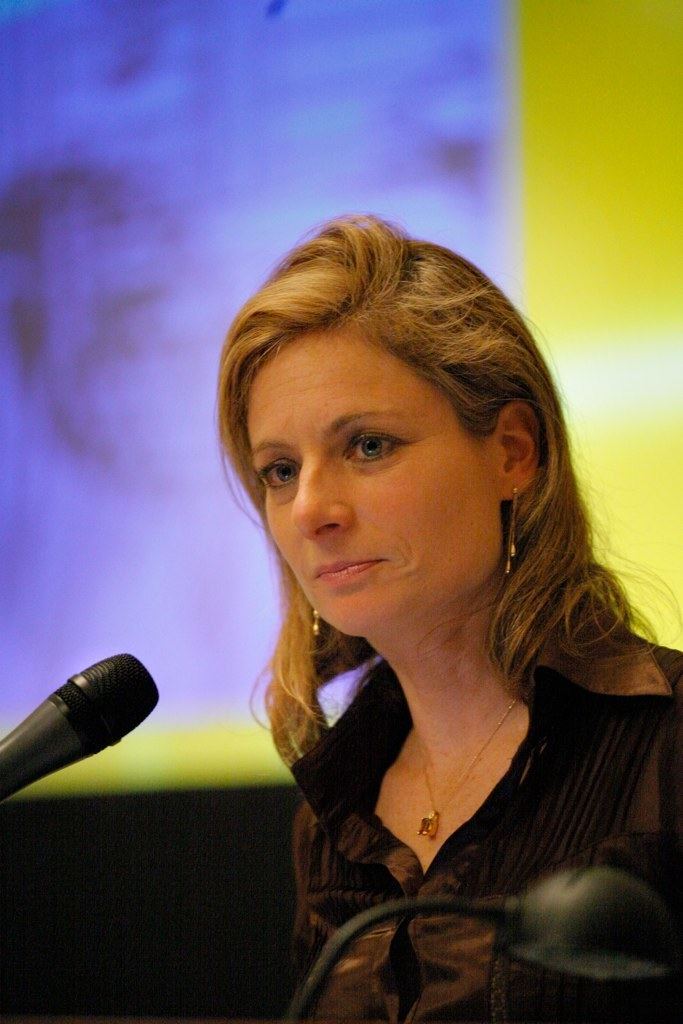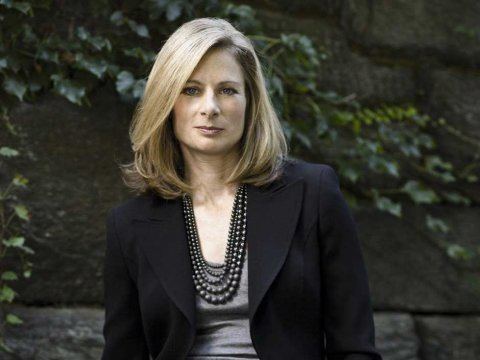Nationality American Fields Physics | Role Physicist Name Lisa Randall Siblings Dana Randall | |
 | ||
Residence Massachusetts, United States Institutions Lawrence Berkeley LaboratoryUniversity of California, BerkeleyPrinceton UniversityMassachusetts Institute of TechnologyHarvard University Alma mater Stuyvesant High SchoolHarvard University Doctoral students Csaba Csaki, Eric Sather, Witold Skiba, Shu-fang Su, Emanuel Katz, Matthew Schwartz, Shiyamala Thambyahpillai, Liam Fitzpatrick, David Simmons-Duffin, Brian Shuve Known for Randall–Sundrum modelWarped Passages Books Warped Passages, Knocking on Heaven’s, Higgs Discovery: The Pow Similar People | ||
Lisa Randall: The Invisible Universe-How Physics Teaches Us to “See”
Lisa Randall (born June 18, 1962) is an American theoretical physicist working in particle physics and cosmology. She is the Frank B. Baird, Jr. Professor of Science on the physics faculty of Harvard University. Her research includes elementary particles, fundamental forces and extra dimensions of space. She studies the Standard Model, supersymmetry, possible solutions to the hierarchy problem concerning the relative weakness of gravity, cosmology of extra dimensions, baryogenesis, cosmological inflation, and dark matter. She contributed to the Randall–Sundrum model, first published in 1999 with Raman Sundrum.
Contents
- Lisa Randall The Invisible Universe How Physics Teaches Us to See
- Lisa randall interview full episode the tim ferriss show podcast
- Early life and education
- Academia
- Popular Books
- Professional Organizations
- Awards and honors
- Personal life
- References

Lisa randall interview full episode the tim ferriss show podcast
Early life and education

Randall was born in Queens, New York City. She is an alumna of Hampshire College Summer Studies in Mathematics and graduated from Stuyvesant High School in 1980, where she was a classmate of fellow physicist and science popularizer Brian Greene. She won first place in the 1980 Westinghouse Science Talent Search at the age of 18. At Harvard University, Randall earned both a BA in physics (1983) and a PhD in theoretical particle physics (1987) under Howard Georgi.
Academia
Randall researches particle physics and cosmology at Harvard, where she is a professor of theoretical physics. Her research concerns elementary particles and fundamental forces, and has involved the study of a wide variety of models, the most recent involving extra dimensions of space. She has also worked on supersymmetry, Standard Model observables, cosmological inflation, baryogenesis, grand unified theories, and general relativity.

After her graduate work at Harvard, Randall held professorships at MIT and Princeton University before returning to Harvard in 2001. Professor Randall was the first tenured woman in the Princeton physics department and the first tenured female theoretical physicist at Harvard. (Melissa Franklin was the first tenured woman in the Harvard physics department.)
Popular Books
Randall's books Warped Passages: Unraveling the Mysteries of the Universe's Hidden Dimensions and Knocking on Heaven’s Door: How Physics and Scientific Thinking Illuminate the Universe and the Modern World have both been on New York Times 100 notable books lists.
Between the hardback and paperback release of Knocking on Heaven's Door, the quest for the discovery of the Higgs boson was actually completed, a subject discussed in the book. Scientists at the Large Hadron Collider found a particle identified as the Higgs boson. She said about the discovery, that even if people don't understand everything about it, "what an exciting thing it is that people are excited that there is something fundamentally new that has been discovered." Randall has an e-book entitled Higgs Discovery: The Power of Empty Space. Before the Large Hadron Collider was operating, she wrote an article explaining the discoveries that were expected from using it. She was commonly asked about the misconception that the LHC could make black holes that could destroy the planet. She answered that it was "not even conceivable unless space and gravity are very different from what we thought."
Randall wrote the libretto of the opera Hypermusic Prologue: A Projective Opera in Seven Planes on the invitation of the composer, Hèctor Parra, who was inspired by her book Warped Passages.
Professional Organizations
Randall is a member of the American Academy of Arts and Sciences (2004) and the National Academy of Sciences (2008), and a fellow of the American Physical Society.
Randall has helped organize numerous conferences and has been on the editorial board of several major theoretical physics journals.
Awards and honors
In autumn 2004, she was the most cited theoretical physicist of the previous five years. Professor Randall was featured in Seed magazine's "2005 Year in Science Icons" and in Newsweek's "Who's Next in 2006" as "one of the most promising theoretical physicists of her generation." In 2007, Randall was named one of Time magazine's 100 Most Influential People (Time 100) under the section for "Scientists & Thinkers". Randall was given this honor for her work regarding the evidence of a higher dimension.
Other honors:
Personal life
In an interview she was asked if she believes in God.
"...I probably don't believe in God. I think it's a problem that people are considered immoral if they're not religious. That's just not true. This might earn me some enemies, but in some ways they may be even more moral. If you do something for a religious reason, you do it because you'll be rewarded in an afterlife or in this world. That's not quite as good as something you do for purely generous reasons."
Randall's sister, Dana Randall, is a professor of computer science at Georgia Tech.
